Acyl-coenzyme A binding domain containing 3 (ACBD3; PAP7; GCP60): an emerging signaling molecule
- PMID: 20043945
- PMCID: PMC2873055
- DOI: 10.1016/j.plipres.2009.12.003
Acyl-coenzyme A binding domain containing 3 (ACBD3; PAP7; GCP60): an emerging signaling molecule
Abstract
Golgi body-mediated signaling has been linked to its fragmentation and regeneration during the mitotic cycle of the cell. During this process, Golgi-resident proteins are released to the cytosol and interact with other signaling molecules to regulate various cellular processes. Acyl-coenzyme A binding domain containing 3 protein (ACBD3) is a Golgi protein involved in several signaling events. ACBD3 protein was previously known as peripheral-type benzodiazepine receptor and cAMP-dependent protein kinase associated protein 7 (PAP7), Golgi complex-associated protein of 60kDa (GCP60), Golgi complex-associated protein 1 (GOCAP1), and Golgi phosphoprotein 1 (GOLPH1). In this review, we present the gene ontology of ACBD3, its relations to other Acyl-coenzyme A binding domain containing (ACBD) proteins, and its biological function in steroidogenesis, apoptosis, neurogenesis, and embryogenesis. We also discuss the role of ACBD3 in asymmetric cell division and cancer. New findings about ACBD3 may help understand this newly characterized signaling molecule and stimulate further research into its role in molecular endocrinology, neurology, and stem cell biology.
Figures



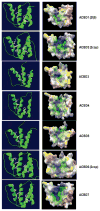

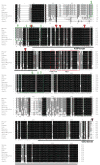
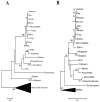

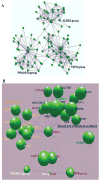
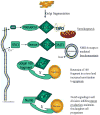
Similar articles
-
Acyl-CoA-Binding Domain-Containing 3 (ACBD3; PAP7; GCP60): A Multi-Functional Membrane Domain Organizer.Int J Mol Sci. 2019 Apr 24;20(8):2028. doi: 10.3390/ijms20082028. Int J Mol Sci. 2019. PMID: 31022988 Free PMC article. Review.
-
ACBD3 is required for FAPP2 transferring glucosylceramide through maintaining the Golgi integrity.J Mol Cell Biol. 2019 Feb 1;11(2):107-117. doi: 10.1093/jmcb/mjy030. J Mol Cell Biol. 2019. PMID: 29750412 Free PMC article.
-
The mammalian Golgi regulates numb signaling in asymmetric cell division by releasing ACBD3 during mitosis.Cell. 2007 Apr 6;129(1):163-78. doi: 10.1016/j.cell.2007.02.037. Cell. 2007. PMID: 17418793
-
Acyl-CoA binding domain containing 3 (ACBD3) recruits the protein phosphatase PPM1L to ER-Golgi membrane contact sites.FEBS Lett. 2012 Sep 21;586(19):3024-9. doi: 10.1016/j.febslet.2012.06.050. Epub 2012 Jul 10. FEBS Lett. 2012. PMID: 22796112
-
Emerging Role for Acyl-CoA Binding Domain Containing 3 at Membrane Contact Sites During Viral Infection.Front Microbiol. 2020 Apr 8;11:608. doi: 10.3389/fmicb.2020.00608. eCollection 2020. Front Microbiol. 2020. PMID: 32322249 Free PMC article. Review.
Cited by
-
Searching for cellular partners of hantaviral nonstructural protein NSs: Y2H screening of mouse cDNA library and analysis of cellular interactome.PLoS One. 2012;7(4):e34307. doi: 10.1371/journal.pone.0034307. Epub 2012 Apr 10. PLoS One. 2012. PMID: 22506017 Free PMC article.
-
Maturation and activity of sterol regulatory element binding protein 1 is inhibited by acyl-CoA binding domain containing 3.PLoS One. 2012;7(11):e49906. doi: 10.1371/journal.pone.0049906. Epub 2012 Nov 14. PLoS One. 2012. PMID: 23166793 Free PMC article.
-
The Chlamydia pneumoniae inclusion membrane protein Cpn0308 interacts with host protein ACBD3.J Bacteriol. 2025 Jan 31;207(1):e0027524. doi: 10.1128/jb.00275-24. Epub 2024 Dec 26. J Bacteriol. 2025. PMID: 39723831 Free PMC article.
-
The lipid-metabolism enzyme ECI2 reduces neutrophil extracellular traps formation for colorectal cancer suppression.Nat Commun. 2024 Aug 21;15(1):7184. doi: 10.1038/s41467-024-51489-1. Nat Commun. 2024. PMID: 39169021 Free PMC article.
-
Remodeling of host phosphatidylcholine by Chlamydia acyltransferase is regulated by acyl-CoA binding protein ACBD6 associated with lipid droplets.Microbiologyopen. 2015 Apr;4(2):235-251. doi: 10.1002/mbo3.234. Epub 2015 Jan 21. Microbiologyopen. 2015. PMID: 25604091 Free PMC article.
References
-
- Misumi Y, Sohda M, Ikehara Y. GCP60, a novel Golgi phosphoprotein, interact with giantin and involved in the maintenance of the Golgi structure. Cell Struct Funct. 2000;25:410.
-
- Sohda M, Misumi Y, Yamamoto A, Yano A, Nakamura N, Ikehara Y. Identification and characterization of a novel Golgi protein, GCP60, that interacts with the integral membrane protein giantin. J Biol Chem. 2001;276:45298–45306. - PubMed
-
- Barr FA, Short B. Golgins in the structure and dynamics of the Golgi apparatus. Curr Opin Cell Biol. 2003;15:405–413. - PubMed
-
- Li H, Degenhardt B, Tobin D, Yao ZX, Tasken K, Papadopoulos V. Identification, localization, and function in steroidogenesis of PAP7: a peripheral-type benzodiazepine receptor- and PKA (RIalpha)-associated protein. Mol Endocrinol. 2001;15:2211–2228. - PubMed
Publication types
MeSH terms
Substances
Grants and funding
LinkOut - more resources
Full Text Sources
Other Literature Sources
Research Materials

